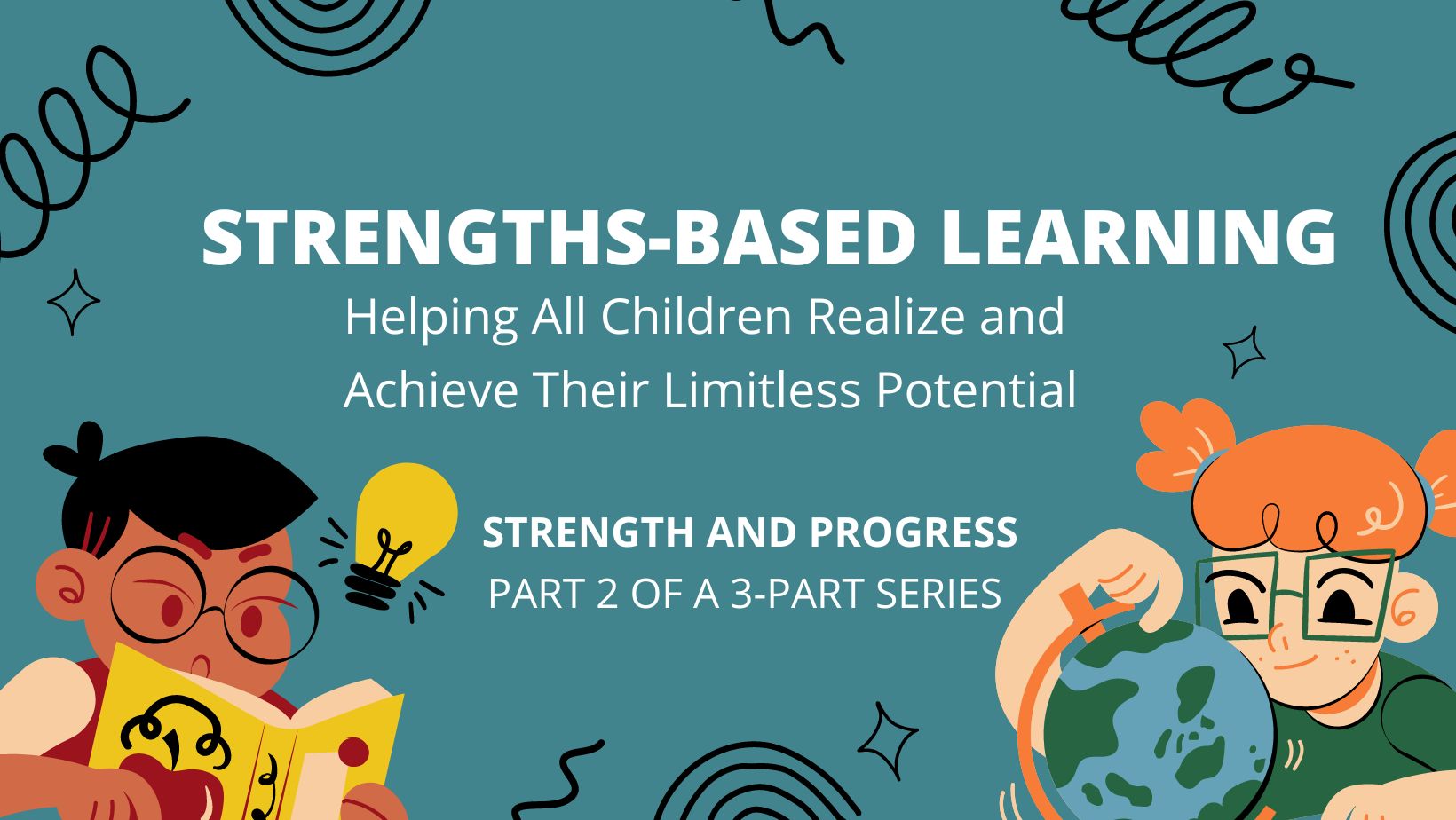
Strengths-based Learning: Helping all Children Realize and Achieve Their Limitless Potential
Strength and Progress
(Part Two of a Three-Part Series)
Last month, we discussed the importance of using strengths-based learning models, emphasizing their role in celebrating each child’s unique skills, paving the way for their future success in academics and life. We introduced the SPOT method, an approach focused on recognizing these talents through mindful observation.
SPOT stands for:
Strength observation
Progress over perfection
Opportunity to shine, and
Teach, try, and tap into strengths.
This month, we are delving into the first two segments of the SPOT method in detail, offering strategies to integrate these practices into your child’s daily experiences. Our goal is to provide you with practical tools that will not only enhance your child’s learning journey but also encourage their overall growth and development.
Strength observation. A strength observation is simply an inquiry into the strengths of a child. It is a process for discovering the strengths of the child through the intentional quest towards finding the positive. The parent, teacher, or coach discerns the child’s strengths through observation and inquiry. The strength observer is curious and seeks to understand the child’s behaviors, experiences, and desires through an explorer’s mindset. The strength observer is open to exploring all possible strengths the child may possess.
A successful strength observer considers affirming-based questions such as the following:
- Does the child work better independently or with others?
- When does the child get excited, energized, focused?
- Which tasks does the child initiate without prompting or reminders?
- Which tasks are easiest for the child to initiate on their own?
- What comes easily for the child?
- What positive behavior patterns emerge from the observations?
Consider that many of us learned through a deficit-based approach, so we naturally lean towards identifying deficits rather than celebrating those skills and areas where our children shine the most.
Another important aspect of strength observations is not only making open-minded observations into a child’s strengths, but also reviewing your findings with the child. For instance, maybe a teacher observed a student sustain focus over a long period of time. The teacher may say, “Your attention to details is strong, and you were able to focus throughout the entire task to finish your assignment.” Maybe a teacher observed a student who didn’t contribute much during the brainstorming portion of the group project, but captivated her peers during the whole-class presentation. The teacher may say, “Your ability to engage an audience during your presentation was stellar.”
Before moving on to the second step in the SPOT process, another important aspect of the strength observation is to take time to encourage the child to reflect on their view of their strengths. For example, a parent may recognize that their child did a great job resolving a conflict with their sibling. The parent might say to the child, “I was impressed by how patient, caring, and diplomatic you were during that recent argument with your brother. Do you agree that you handled that patiently and with empathy?” This conversation will not only allow you to see how well your observations align with how the child perceives herself, but it will also help the child learn more about herself and begin thinking about things she does well.
Some additional questions to consider and ask in this last phase of the strength observation stage of SPOT are as follows:
- What do you think you do well?
- What do you enjoy doing the most?
- What comes easily for you?
- Is there anything you do that makes you lose track of time?
Progress over perfection. Being able to identify and use strengths can be difficult, because many of us are not used to tapping into our strengths. What is important to remember in a strengths-based approach is that Progress is far more important than perfection. The idea in this phase of the SPOT process is to help our youth understand the importance of Progress. Being able to consistently use one’s strength is a skill. Just as Michael Jordan practiced his craft on a daily basis, once we have discovered our strengths, practicing using them is essential to developing them.
Similarly, the ability to practice our strength-finding skills will be an ongoing process and will take time. It will take time and concerted effort to re-shift our thinking towards focusing on the strengths in our children. Additionally, it will take time for our children to accept their strengths and find new ways to use those strengths in other aspects of their lives. The more conscious we become at observing strengths, sharing the strengths we see, and supporting our children in reflecting on how they see their strengths show up in their daily lives, the more progress they will make towards realizing their limitless potential.
Our exploration of the SPOT method’s initial segments – Strength observation and Progress over perfection – offers a focused and intentional approach to identifying children’s unique abilities. By adopting an explorer’s mindset, parents and educators can observe and celebrate each child’s strengths, shifting from a deficit-focused perspective to one that values positive attributes. This approach not only enriches the learning experience but also builds self-awareness and positive self-image in children.
In our next installment of this series, we will discuss the final segments of SPOT, along with helpful examples and ways to implement these practices into everyday life.
Have a question about our schools and programs?
Contact us at:admissions@thehelpgroup.org

Shayne M. Horan, Ed.D., Vice President of Schools at The Help Group, brings over two decades of transformative leadership, excelling in opening campuses, surpassing enrollment targets, and achieving ambitious goals through strategic planning. A visionary and thought leader, Shayne’s collaborative and thoughtful approach continues to drive sustained success. With a proven track record in educational growth, top performance accolades, and holding advanced degrees in Leadership and Educational Administration, Shayne inspires positive change and empowers individuals toward a greater cause.
